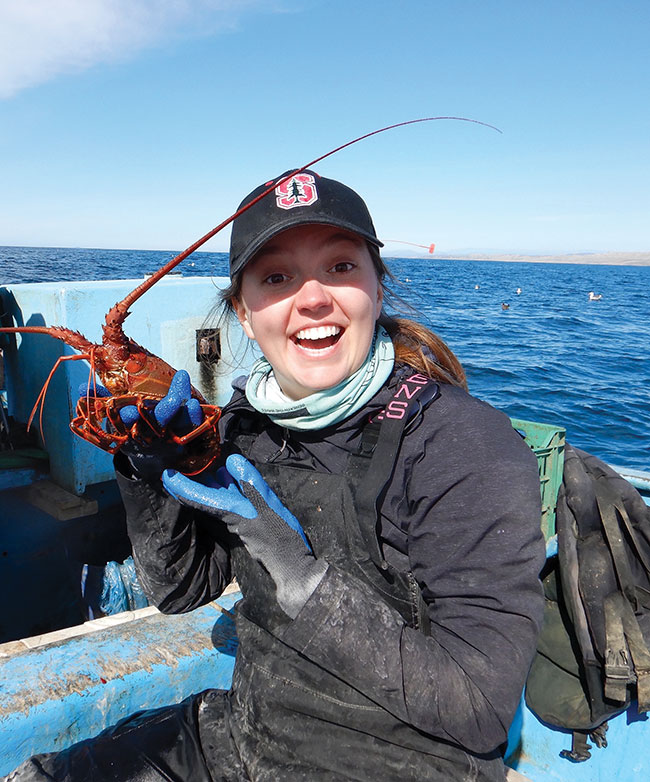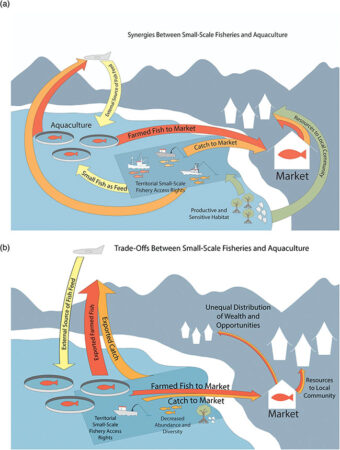
Stanford research examines relationship between small-scale fisheries and aquaculture
March 26, 2024
By Matt Jones
 Dr. Elizabeth Mansfield says that recent research emphasized “the need for collaborative and adaptive approaches to aquaculture implementation.”
Photo: Elizabeth Mansfield, Stanford Center for Ocean Solutions
Dr. Elizabeth Mansfield says that recent research emphasized “the need for collaborative and adaptive approaches to aquaculture implementation.”
Photo: Elizabeth Mansfield, Stanford Center for Ocean Solutions New research out of the Stanford Center for Ocean Solutions has examined the trade-offs and potential synergies between small-scale fisheries (SSFs) and aquaculture. The research involved assessing and analyzing 46 different case studies from 30 different countries.
“One major takeaway is that in more than half of the statistically analyzed case studies, either social, economic or environmental benefits resulted from the interactions between the two sectors,” says Elizabeth Mansfield, a postdoctoral researcher and one of the lead authors of the study.
“However, in one third of the cases, trade-offs emerged, most often involving increased competition for space or markets… This really emphasizes the need for collaborative and adaptive approaches to aquaculture implementation.”
The research team identified three main factors that influence whether interactions between aquaculture and SSFs would be positive or antagonistic; 1) access to resources and allocation of rights; 2) the nature of interactions in markets and through supply chains; and 3) exposure to and management of risks from exogenous factors such as disease or climate change.

Hypothesized general conditions leading to synergies (a) and trade-offs (b) between small-scale fisheries and aquaculture
Photo: Stanford Center for Ocean Solutions
Due to the nature of those factors, Mansfield agrees that policymakers and regulators have a significant impact on the nature of those interactions, but that the best outcomes would result when those regulators take the voices of both sectors into account in their decision-making process.
“Establishing clear and equitable rights and access can help minimize conflict between the two sectors,” says Mansfield.
In general, the research found more positive interactions between SSFs and small-scale aquaculture in developing nations and more antagonistic interactions involved large-scale industrial aquaculture in developed nations which use imported feed for an exported product. Mansfield speculates that there would also be similar interactions between SSFs and larger, more industrial marine fisheries.





